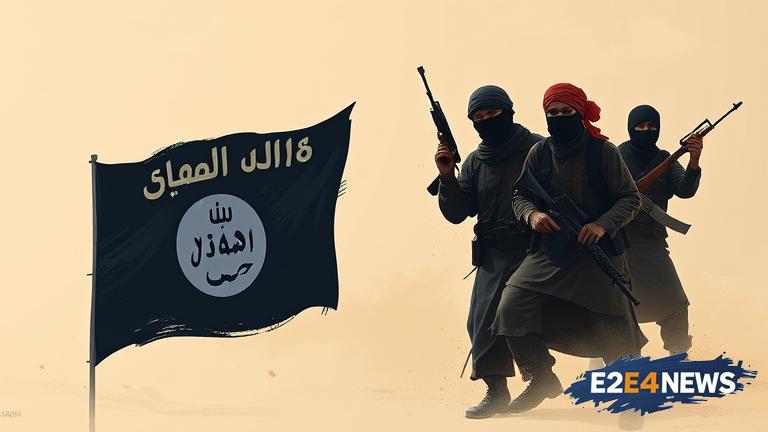The Islamic State, also known as ISIS, and Al-Qaida are two of the most notorious terrorist organizations in the world. Both groups have been responsible for numerous attacks and atrocities, resulting in the loss of thousands of lives. The Islamic State, which emerged in 2014, has been particularly active in the Middle East, with a strong presence in Iraq and Syria. The group’s brutal tactics, including beheadings and mass killings, have shocked the world and led to a significant increase in military intervention in the region. Al-Qaida, on the other hand, has been active for decades and has been responsible for some of the most devastating terrorist attacks in history, including the 9/11 attacks in the United States. Despite the efforts of international authorities to disrupt their operations, both groups continue to pose a significant threat to global security. The Islamic State’s influence has spread beyond the Middle East, with affiliates and sympathizers in countries such as Libya, Egypt, and Afghanistan. Al-Qaida, meanwhile, has maintained a strong presence in countries such as Yemen and Somalia. The groups’ ability to adapt and evolve has made them difficult to defeat, with both using social media and other online platforms to recruit new members and spread their ideology. The threat posed by the Islamic State and Al-Qaida is not limited to the Middle East, with both groups having carried out attacks in Europe and other parts of the world. The use of suicide bombers and other tactics has made it difficult for authorities to prevent attacks, and the groups’ ability to inspire lone-wolf attackers has added to the complexity of the threat. The international community has responded to the threat posed by the Islamic State and Al-Qaida with a range of measures, including military intervention, intelligence sharing, and counter-terrorism operations. However, the groups’ ability to operate in secret and their use of encrypted communication channels has made it difficult to disrupt their operations. The Islamic State’s use of social media has been particularly effective, with the group using platforms such as Twitter and Facebook to spread its ideology and recruit new members. Al-Qaida, meanwhile, has maintained a strong presence in countries such as Pakistan and Afghanistan, where it has been able to operate with relative impunity. The groups’ ideology is based on a distorted interpretation of Islam, which emphasizes the need for jihad, or holy war, against non-Muslims and those who do not share their interpretation of the faith. The Islamic State’s ideology is particularly extreme, with the group believing in the need for a caliphate, or Islamic state, to be established across the Middle East. The group’s leader, Abu Bakr al-Baghdadi, has been particularly effective in spreading the group’s ideology, using online videos and other platforms to reach a wide audience. Al-Qaida’s ideology, meanwhile, is more focused on the need for jihad against the West and other non-Muslim enemies. The group’s leader, Ayman al-Zawahiri, has been a key figure in spreading the group’s ideology, using online videos and other platforms to reach a wide audience. The threat posed by the Islamic State and Al-Qaida is likely to continue for many years, with both groups having established themselves as major players in the global terrorist landscape. The international community will need to continue to work together to disrupt the groups’ operations and prevent further attacks. This will require a range of measures, including military intervention, intelligence sharing, and counter-terrorism operations. The use of social media and other online platforms will also need to be addressed, with both groups using these platforms to spread their ideology and recruit new members. The Islamic State and Al-Qaida’s influence has spread to many countries, including the United States, where there have been several attacks inspired by the groups. The threat posed by the groups is not limited to the Middle East, with both having carried out attacks in Europe and other parts of the world. The groups’ ability to adapt and evolve has made them difficult to defeat, with both using new tactics and strategies to spread their ideology and carry out attacks.





